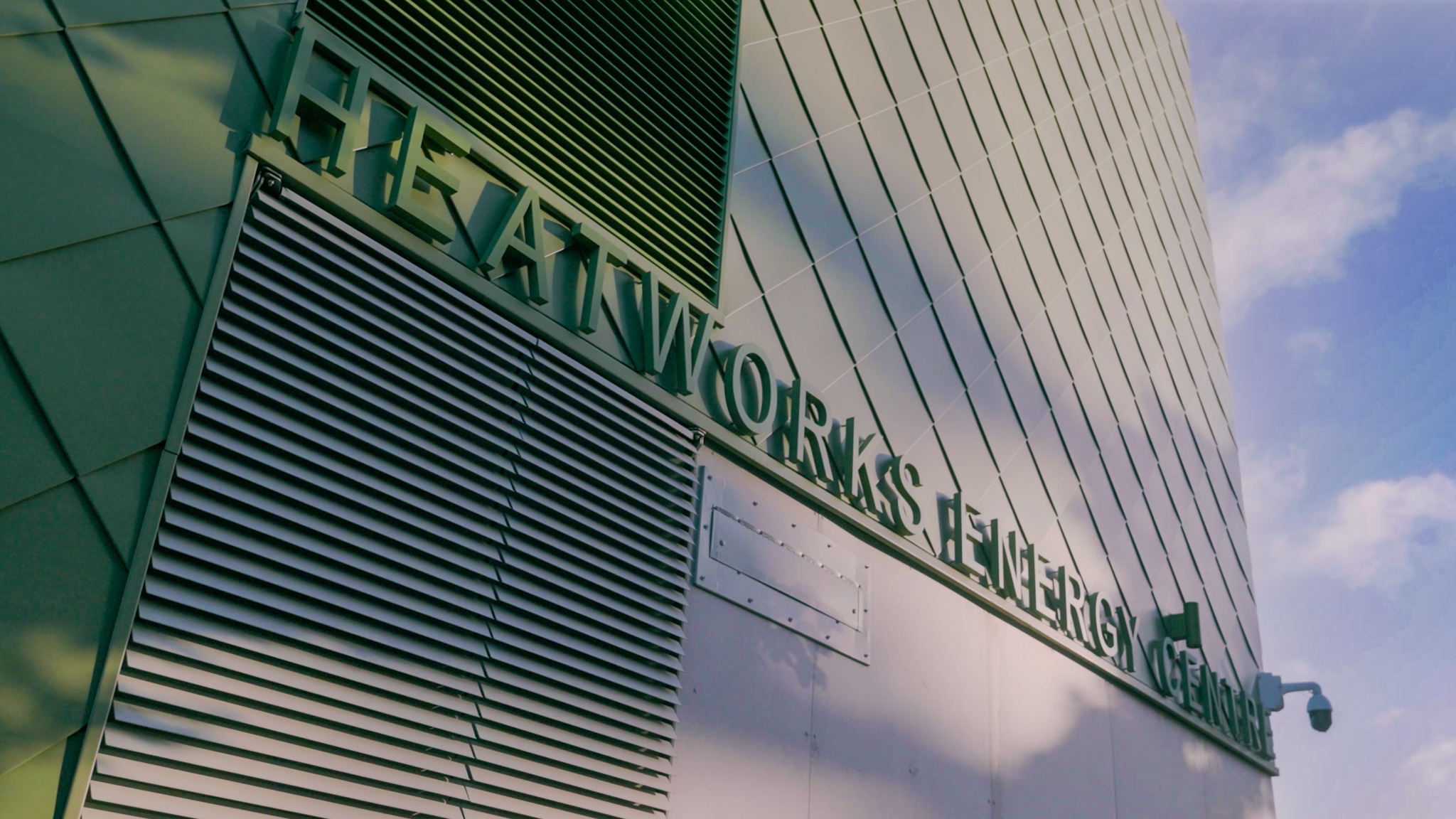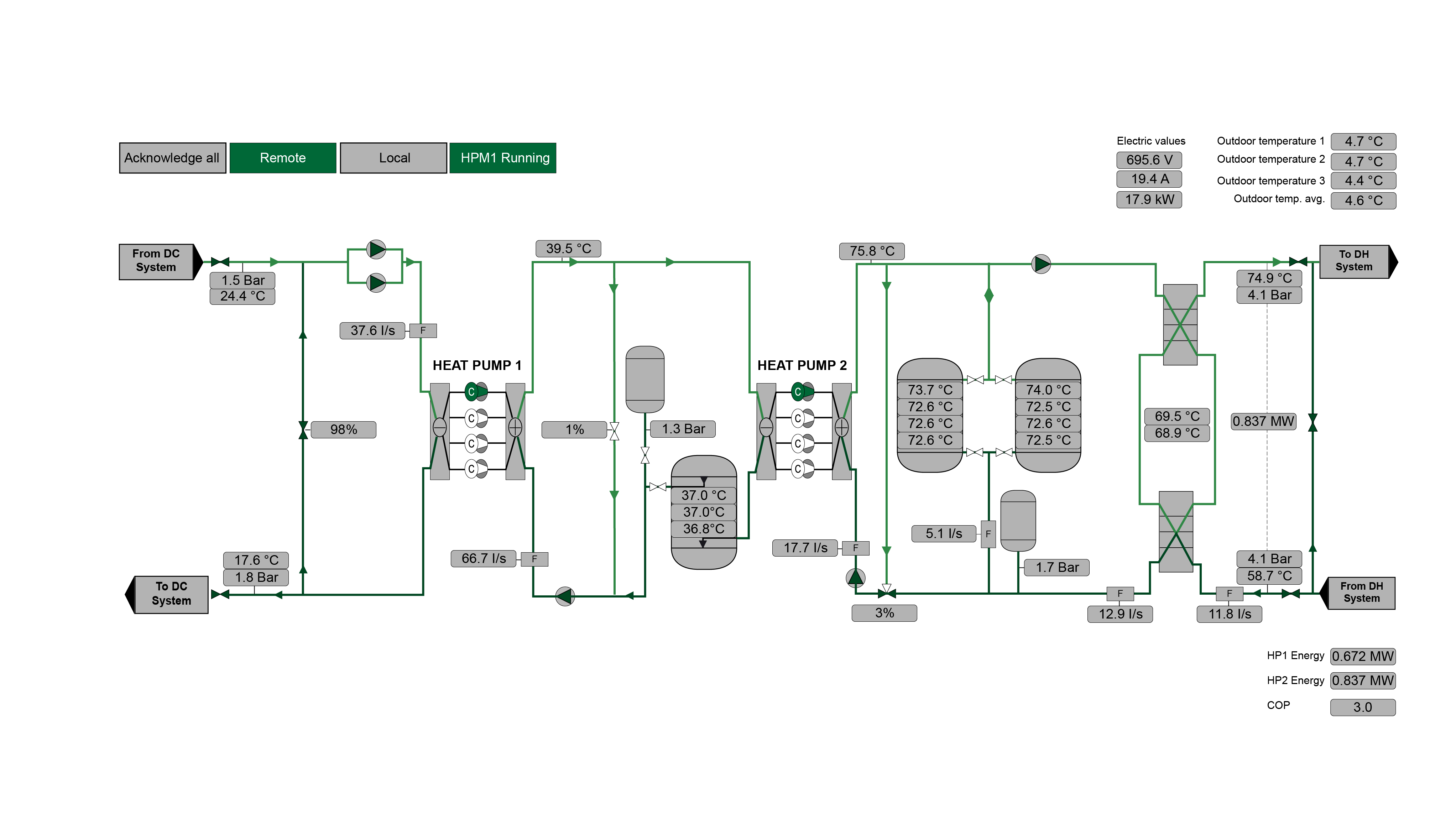
If you’ve followed me for the past few years (or watched Now Go Build), you know that I’m very interested in the role that technology can play to help address global socioeconomic and environmental challenges. On a recent trip to Ireland, I had a chance to visit Tallaght, a growing area in South Dublin that’s recently undergone significant revitalization efforts. Here, community leaders, the local energy agency, and AWS have come together to reimagine the way that heat and hot water are provided to everything from hospitals and government buildings to a university campus and public housing. The program is called the Tallaght District Heating Scheme, a collaboration between Codema (Dublin’s energy agency), the South Dublin County Council, AWS, and Heat Works, Ireland’s first not-for-profit energy utility, which runs the network. This program is the first of its kind on the Emerald Isle, but with the latest estimates showing that district heating could supply more than 87% of Dublin’s heating demand by 2050, it could be the first of many.
District heating itself isn’t a new idea. People have found ways to centrally produce and distribute heat for thousands of years, from the hypocausts of ancient Rome and the ondols of Korea to 20th century New York’s steam operations that heated and cooled a significant portion of lower Manhattan (nearly 1,500 buildings in the city still get their heat from steam). And while these solutions have been around for a long time, they haven’t always been sustainable. Many of these heating systems relied on burning coal and other fossil fuels to produce heat, which we now know is a producer of significant emissions and driver of climate change. More recently, cogeneration facilities, such as CopenHill in Copenhagen have provided a model for capturing the heat produced by critical infrastructure, such as waste incineration, and using it to heat the community. Which brings us back to Tallaght, and why their new district heating program is so important for Ireland’s energy future.
Today, Ireland is on a significant energy transition away from fossil fuels, and they have an ambitious goal to reduce their greenhouse gas emissions by 51% by the end of the decade. To get there, local leaders are finding new solutions to old problems. For example, Amazon has invested in three Irish wind farms to deliver clean energy to the country’s electricity grid. And in the greater Dublin area, there are novel opportunities to tap into renewable and underutilized energy sources, including deep geothermal and waste heat from industrial and municipal processes (e.g., data centers, waste treatment facilities, even breweries). Codema estimates that these untapped sources can produce approximately 19 TWh, which is enough energy to heat the equivalent of roughly 1.6 million homes and play a significant role in Ireland’s decarbonization efforts.
How district heating works
District heating, put simply, is heat generated at a centralized site (e.g., hot water), then distributed to the community using insulated pipes, where the heat is extracted by homes and businesses, and in many cases, like with Tallaght, where the cooled byproduct is returned to the system to be reheated.
District heating systems are an attractive option for communities aiming to reduce their carbon footprint. These systems are energy source agnostic – they can utilize power and heat from various sources, including renewables. This flexibility allows these networks to adapt over time as new technologies emerge and climate goals evolve. For example, they can transition from biofuel to capturing recycled heat from waste incineration. They also reduce infrastructure overhead for homes by eliminating the need for individual boilers and hot water heaters. The ability to choose and change energy sources helps future-proof these systems, providing municipalities and residents flexibility not always possible with other heating solutions.
From hot air to warm water and heat
Servers produce heat. And to run efficiently and protect those servers, typically data centers are cooled with massive air handling units. However, if we look at the byproduct of running servers as an opportunity, we see how the heat can be used in a positive way. At our Tallaght data center, hot air from servers is captured by a heat exchanger in the air handling unit, which increases the temperature of water running through the building to approximately 23-28° Celsius (that’s 73-82° Fahrenheit for my American readers) before it’s pumped to Heat Works’ energy center via insulated pipes. The system takes this warm water and passes it through the first of two heat pumps, where it is condensed until the temperature is approximately 45° C (113° F). The hot water then passes through a second heat pump, where the water temperature is increased again to between 70° – 85° C (158 – 185° F) depending on the season. At this point, the piping hot water leaves the energy center in insulated pipes and is available for customers connected to the heating system.

Where a typical home might make use of individual hot water heaters or boilers, in a district heating system, these are replaced by heat interface units, which transfer hot water from the system into a building or home on-demand. They also operate as a pressure break, ensuring that there is no backflow.
As heat is consumed by homes and businesses, the water that has lost heat during energy transfer is returned to the Heat Work energy center. It then passes through a pump to be cooled further to ~15°C (59°F), before making its way to the AWS data center where the heating process starts all over again.
Observability
Monitoring plays a crucial role in any system of significant scale, whether it’s a data center, a distributed application, or a district heating program. It allows for design with fault tolerance in mind – knowing that things will fail at some point, but provides the ability to quickly identify issues and maintain operations when components go down. The Tallaght District Heating Scheme is monitored 24/7 by Heat Works. At any moment, they can see water and air temperature, pressure, flow rate, energy generation at each heat pump – they can even detect leaks in the system to within a few meters. This last part is a big deal, when you consider that in the past, repair crews would often rely on visual indicators, such as steam to identify a leak (which is quite hard in warmer months).

If you need an example of just how important monitoring and grid modernization projects are, look no further than the UK, where they are losing 3 billion liters of water per day, because the hydrophones designed for metal pipes have a hard time detecting leaks in the newer plastic pipes in the system.
What comes next?
Today, the collaboration between AWS and Heat Works is supplying Tallaght with 3 MW of energy from the local data center that would have previously come from gas or fossil fuel. That’s enough to heat roughly 43,000 m2 of public buildings, including the local university, library, and innovation center, and has reduced carbon emissions in the area by nearly 1,500 metric tons per year (that’s the mass of about 7.5 adult blue whales or 730 average-sized cars). In the next two years, there are plans to double energy generation and expand the program to residential buildings and other critical infrastructure in the community.
The Tallaght District Heating Scheme demonstrates the immense potential for sustainable community energy systems in Ireland. And it is an excellent example of how government agencies, energy suppliers, and industries within the country can collaborate on large-scale projects that not only work towards decarbonization goals, but can help to revitalize communities and ensure that they have reliable access to energy and heat.
And just as important as the district heating program itself, is the transformation underway in Tallaght. They have welcomed industries like cloud computing, they’re investing in their youth with education programs that run from primary school through university, and the local hospital has embraced machine learning and other cloud technologies to improve outcomes for patients in their community. Like the many components of the network delivering heat, this model of cross-industry collaboration shows that when everyone plays their part, everyone benefits. Give and take, input and output. In a world seeking to balance sustainability with connectivity and consumption, Tallaght is a blueprint for how industry and communities can come together to achieve amazing outcomes. It’s a model I hope to see widely adopted in the years to come.
Now, go build!
